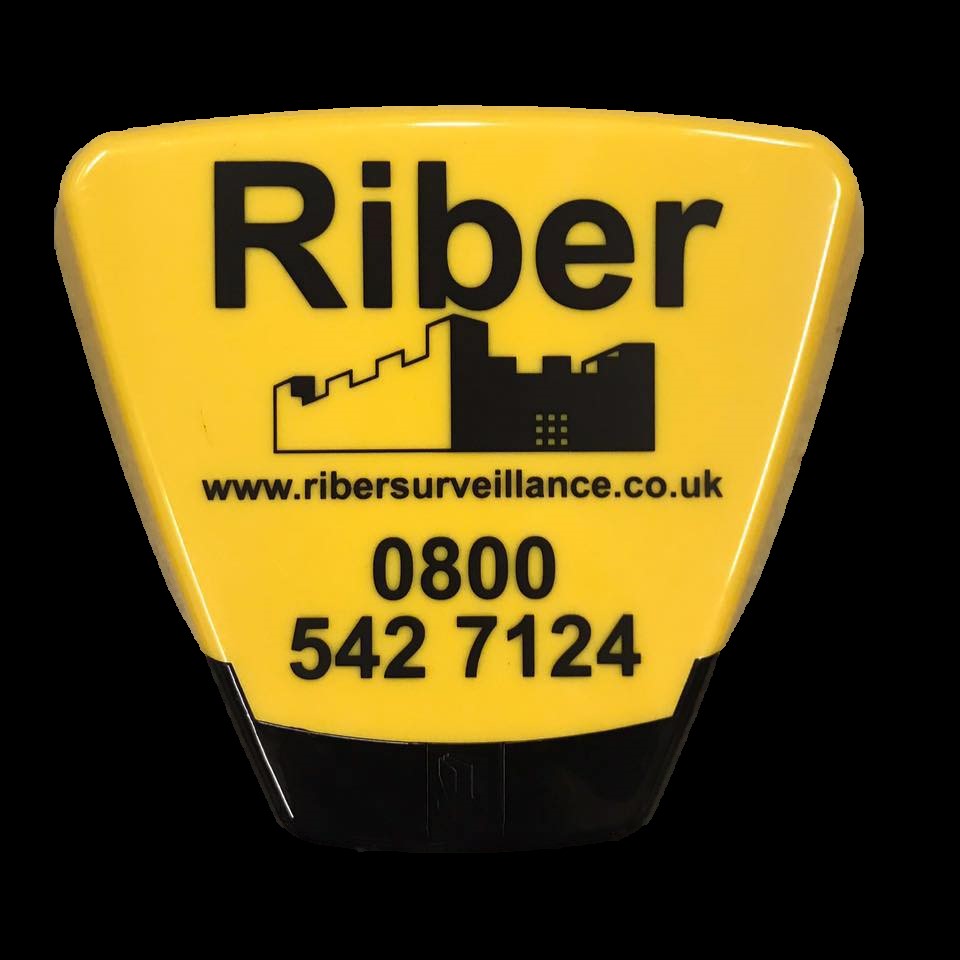Title Page
-
Document No.
-
Audit Title
-
Client / Site
-
Conducted on
-
Prepared by
-
Location
-
Personnel
-
Building Name & ID
Interior Enviroment
-
1. Are floors and surfaces in good condition?
-
2. Are stairways and aisles kept clear and useable?
-
3. Are lighting levels satisfactory?
-
4. Is the general presentation and cleanliness satisfactory?
-
5. Are the kitchen/tea rooms clean?
-
6. Are lifts clean, well lit and are the emergency phones operational?
-
7. Are public facilities and large common areas (i.e food courts, etc) well presented?
-
8. Load Bearing Masonry Wall: Inspect load bearing walls for structural damages paying particular attention to the following: Cracks caused by either structural movement or material shrinkage Leaning and bulges Loose/damp mortar joints and spalling Wet spots, stains and water penetration Insect/termite infestation and decay on wood members
-
9. Cast-in-Place Concrete Wall: Look for: Settlement, cracks, and leaning Water penetration, wet spots, and stains Moisture conditions (dampness etc.) Insect/termite infestation and decay on wood members
-
11. Steel Beams/Concrete Deck: Check for: Deflection at midspan Sloping floor Corroded connections Missing connections and connections bearing on masonry Settlement effects, mechanical or exterior leakage
-
10. Wood Joists & Beams: Check for: Sagging at the center of span Springiness or vibration Pronounced slope in one direction Split at bottom of joist or beam Floor squeaking and insect infestation/decay Bearing on masonry Bulging or sagging plaster ceiling Overloading of joists and beams
-
12. Reinforced Concrete Floor: Check for: Spalling and exposed reinforced steel Wide, regularly spaced cracks in floor Cracks near and parallel to masonry wall Surface dusting and cracked concrete near columns
-
13. Masonry Floors: Check for: Leaks, cracks, and spalling Alterations and new holes cut on floor for stairs, mechanical installations etc. Efflorescence Sidewalk vaults and subgrade storage Crack at the crown of the arch and between supporting walls
-
14.Wood Floor: Wood floors members bearing directly to the soil are susceptible to insect and fungus attack. Check the underside of boards and floor joists for fungus, insect and or termite attack. Look for: Cracks and badly damaged boards Twisted boards Squeaking If floor boards need refinishing
-
15. Carpet: Inspect for: Frayed edges Damaged portions Stains and worn out areas
-
16. Ceramic Tile: Inspect for: Adherence and grout in joints Loose joints Splits and cracks Missing tiles
-
17. Interior Wall Finishes: Includes but not is limited to plaster/stucco, gypsum board, wood, and wallpaper. Push on suspect wall surfaces to check for looseness Check for signs of dampness (this suggests leaks, either from the roof or internal pipes) Inspect for cracks, bulges, peeling, blistering and mildew
-
18. Ceiling Finishes: May be plaster/stucco, gypsum board, wood, wallpaper, or any other material. Specify this other material in your inspection record sheet. Check for: Signs of damp plaster on ceilings (this suggests leaks from the roof or plumbing and mechanical pipes) Loose plaster, cracks and bulges Blistering and peeling
-
19. Metal Surfaces: Brass, cast iron, and bronze. Inspect all exposed ornamental metal trim. Check for: Built-up dirt, stain and rust Corrosion and cracked surfaces
-
20. Stairs: Check for: Secureness of all railings Gaps between treads, risers and stringers Stair pulling away from the wall Looseness or other damage to balustrades Looseness and other damage to newel post Irregular riser-tread ratios
-
21. Interior Doors and Wood Trim: Check for: Proper door alignment, fit and operation Presence of all door hardware Proper operation of all locks Deterioration of hinges and pins Condition of finish and other problems
-
22. Interior Windows and Wood Trim: Check for: Proper window alignment, fit and operation Presence and functioning of all window hardware Proper operation of locks, hinges and pins Signs of water leakage at frames Movement of sash up and down the frame Seals around window panes Condition of finish and record other problems
-
23. Kitchen Cabinets/Counters: Inspect cabinets and counters to ensure that all drawers and doors are properly hung and secure, and that no movements are restricted and to ensure that all units are securely anchored to walls and floor. Check for: Missing handles and hardware Badly worn or stained countertops Condition of finish
Exterior Enviroment
-
1. Are paths and external stairs in good condition?
-
2. Are landscaped areas well presented & free from rubbish?
-
3. Siding, Shingles, and Sheathing: Has hot sun, wind, rain, hail, dust and winter snow and ice caused damage to siding and sheathing? Inspect siding, shingles, soffits and wood trim such as cornices for: Cracked boards, loose boards, or broken boards Rotted and missing members Signs of veins of dirt (termite tunnels)
-
4. Masonry & Mortar: Any loose mortar joints, cracks, stains and wet spots on the wall? Cracks can be horizontal, vertical, diagonal, hairline or major. Document the nature of the crack, explaining as best as possible the causes of the cracks. Note if cracks are running through just the mortar or also the masonry units.
-
5. Mortar: Are mortar joints loose or missing?
-
6. Brick: Are there any stains, wet spots, bulges, spalling, efflorescence, and missing brick?
-
7. Stone: Does the stone work have any wet spots, stains, spalling, bulges, and efflorescence?
-
8. Stucco/Plaster: Are there any cracks, staining, loose stucco, soft spots, blisters or bulges, and falling stucco?
-
9. Driveways and Sidewalks: Check for: Safety hazards (heaves and depressions) Cracks on and deterioration of paved material Damages to and curb clearances Oil stains and pools of water
-
10. Window Well: Check for: Leaks and standing water Leaves and other debris Other damages to window well material
-
11. Storm Drains: Check for proper drainage and/or clogging of drain line.
-
12. Foundation: Inspect to ensure that there is no collection of leaves and other debris at the edges of the foundation and for proper drainage. Check for: Cracks, spalling from subflorescence and freezing Leaning and Bulges Loose, crumbling, and missing mortar joints
-
13. Landscape: Check all landscape features eg. Trees, Bushes for diseased or dead parts. Check if: Trees overhang or touch building which cause damage or trash build-up Creepers and vines are causing damage (paint peeling, joint deterioration etc.) Plants holding water against structure Tree roots damaging structure Bare spots show in lawn and /or shrubs need pruning
Electrical
-
1. Good condition of incoming service wires and supports?
-
2. Are all interior/exterior outlets and switches operational?
-
3. All exterior plugs and kitchen, bathroom, wet area plugs as required by code are fitted with ground fault connectors?
-
4. Fuses or circuit breakers trip frequently?
-
5. Has an electrician periodically checked all aluminum wire connections?
-
6. Is power brought in overhead rather than underground (if so, look for trees or other hazards that could cause problems)?
-
7. Are power points being used appropriately (i.e no multiboards, double adaptors, etc)
Security
-
1. Are all restricted access areas locked?
Fenestration
-
1. Doors: Are the doors, frames, and weatherstripping in good condition? Check: Door alignment All parts for deterioration All door hardware for proper operation
-
2. Windows: Do the windows have material soundness at sill, joint between sill and jamb, corners of bottom rail and muntins? Check for: Proper operation of all sash (including upper sash of double hung units) Proper operation of hardware Loose, cracked or missing glazing putty Soundness of weatherstripping Cracks and other damages to lintel Rot and/or deterioration of wood framing
Safety
Fire Protection Systems
-
A - Portable Fire Extinguishers
-
1. Is a Service Provider regularly testing and maintaining the following components to the relevant Service Agreement and appropriate State legislation:
-
B- Fire Hose Reels
-
C- Fire Doors
-
D - Fire Alarm System
-
E - Fire Sprinkler System
-
F - Early Warning Intercommunication System
-
G - Emergency Lighting & Exit Signs
-
2. Are Fire Cupboards (fire hose reel storage, etc) clean and free from stored materials and rubbish?
-
3. Are Portable Fire Extinguishers and Fire Hose Reels marked with a location and identification marker?
-
4. Are all Fire Doors operational.
Lighting
-
1. Are luminaires that have transformers, control gear, or accessories, such as spread lenses, glare baffles, or color filters routinely checked?
-
2. Does each lamp have the same color temperature?
-
3. Because lighting elements can contain mercury or lead, it’s imperative to safely store used bulbs until they can be removed by a certified vendor. Is there documentation to verify waste went to a recycling facility and not the dump?
-
4. Check exterior lights to make sure cables aren't torn; all screws and hardware should be in place and working, and gaskets can be replaced to provide a better watertight seal.
-
5. Replace any burned-out lamps and consider group relamping. To create your relamping schedule, calculate lamp life and how often lamps are used.
-
6. Re-aim adjustable lighting as necessary
-
7. Dust lamps and clean lens surfaces to enhance lighting performance.
Plumbing & Restrooms
-
1. Water booster and circulation pump systems require bearing lubrication at least annually; Have the couplings been inspected for any leaks?
-
2. Water heaters and boilers should be fire-tested periodically; Haves flue-gas analysis been conducted to adjust the flue draft and combustion air input to optimize efficiency?
-
3. Remote drinking water chillers need condenser fan motor bearings lubricated annually.
-
4. Sump and sewage ejection pumps are replaced on an as-needed basis but should be checked for function. Are exposed pumps lubricated annually?
-
5. Fixtures, particularly those in public restrooms, often withstand heavy use and abuse. Follow the manufacturer’s recommendations on how often to replace internal workings such as flappers, cartridges and diaphragms. Are there any leaks?
-
6. Check all contacts for wear and pitting, and run system control tests.
-
7. Pump down the system and remove the refrigerant according to manufacturer instructions.
-
8. Drain and replace oil in the compressor oil reservoir, including filters, strainers, and traps.
-
9. Clean toilets and stock with adequate supplies.
HVAC
-
1. Do screws, latches, gaskets, or missing screws need replacements?
-
2. Has a qualified mechanical contractor provide seasonal PM of chillers and boilers services?
-
3. Has bearing lubrication for pump been completed at least annually? Inspect couplings and check for leaks. Investigate unusual noises<br>
-
4. Has cleaning or replacing air filters of air handling unit been completed at least once a month (some may only need to be changed every 3-6 months)?
-
5. Has coil cleaner been applied and wiped off the condenser coil? If you need to remove panels to access the coil, use a licensed contractor.
-
6. Have the settings been periodically inspect for energy efficiency, particularly the compressor, refrigerant charge and thermal expansion valve (if applicable)?
-
7. Does the superheat temperature fall between 10-20 degrees F (in a direct pressure system)? Look up the evaporating temperature per the manufacturer that corresponds with the measured suction line pressure, then measure the actual suction line temperature – the difference between these two numbers is the superheat temperature
-
8. Have an economizer? Dampers can malfunction if they become corroded or jammed with debris. Keep tabs on all moving parts, including the actuator and linkages, as well as seals. Properly calibrate sensors at least once a year.
-
9. Recharge P-traps or U-bend water traps for condensate drain pans
-
10. For cooling towers, disassemble screens and access panels for inspection
-
11. Inspect the cooling tower fill, support structure, sump and spray nozzles
-
12. Fill valve, gear box, drive coupling, fan blades, and motor bearings
-
13. Clean starter and cabinet
-
14. Inspect wiring; check motor starter contacts for wear and proper operation; megger test the motor and log readings
-
15. Check the condition of the sump heater and contactor, and log observations
-
Observations:
Roofing
-
1. Asphalt Shingles: Is there any wear on the shingles on the ridge, hips, and at roof edges? Watch for lumpiness that indicates a new roof has been applied over old shingles; all sorts of damage could be covered up. Look for: Mineral granules almost totally worn off shingles Mineral granules collecting in gutters and base of downspouts Edges of shingles look worn Nails popping up Roof looks new but lumpy Mold or moss forming on shingles Holes in the roof from guy cables, TV antennas etc. Leading edge of roof damaged by ladders
-
2. Clay Tiles: Do any clay tiles show signs of breakage from mechanical shock, such as a falling tree limb or people walking on the tiles without protecting them? Check for: Broken tiles Missing tiles Nails popping up Mold or moss forming on tile
-
3. Slate: Is the slate properly laid? Top quality slate should last a century or more (slate longevity varies depending on slate source). Check for: Broken slates Missing slates Slate flaking apart Nails letting go Slate particles collecting in valley flashing
-
4. Metal: Does the roof show signs of corrosion? If the metal isn't copper, zinc, stainless steel, and other corrosion-resistant metal blends your primary task will be to fight rust by keeping the roof painted. Check for: Rust or corrosion spots Signs of previous patch jobs Punctures in metal Joints and seams broken
-
5. Wood Shingles and Shakes: Is there proper air circulation underneath? For maximum roof life, shingles and shakes require proper air circulation underneath so they can dry after rain. Therefore, they should be laid on open sheathing. If you find that they are improperly laid, you can help them dry by providing adequate ventilation in your attic. Look for: Biological attack (moss or mold, insects, birds) Cupping and warping Deep cracks and splits Wood has become unevenly thin from erosion
-
6. Built-up Roof: Does the roof membrane of a built-up roof consist of one or more plies of roofing felt bonded together either by hot or cold applied roof coatings? Deterioration of the membrane produces areas of the surface of the roof where leaks can occur. It is particularly difficult to diagnose leaks in flat roofs because water can enter at one point and migrate horizontally for long distance before leaking inside the building. Check for: Blisters or slits in the membrane Ponding of water (or dried areas where ponding was) Drain pipes are plugged Drip edges are provided Gravel covers roof well Flashing are well positioned or seated Trash build-up
-
7. Membrane Roof: Is the membrane roof composed of rolls/sheets of materials such as synthetic rubber, thermoplastics, or other man-made materials. Such roofs are often installed over a layer of rigid insulation. These types of membrane roofs may not have a stone top layer. Also, these roof are often white or other reflective colors to reduce solar heat gain and the urban heat island effect. Checklist is generally similar as noted in "Built-up Roof".
-
8. Projections: Is there anything that breaks through the roof surface, such as a chimney or vent pipe? This offers an entrance for water and so must be adequately flashed. Check that no projection or ornament is so weak or damaged that it could topple and smash roofing materials. Check for: Proper flashing around projections Weathering of mortar joints at chimneys Loose mortar joints that admit water Chimney leans Loose and wobbly antennae Loose lightning rods Loose and wobbly weather vane
-
9. Galvanic Action: Is there any corrosion of metals caused by galvanic action? Check for: Ferrous metals touching dissimilar metals, such as galvanized nails in copper flashing
-
10. Cornice: Roofs frequently fail first at the edges and admit water into the cornice. Are the cornices in good condition? Check for: Moisture causing paint to peel on cornice, especially at the underside Broken or missing cornice Cracks and other damages
-
11. Underside of Roof: Are there any water stains on the projections and eaves? Inspect on a rainy day to see if water stains are current or past problem. Look for: Water stains on soffit boards Damaged soffit boards Damaged fascia boards
-
12. Flashing: Flashing is usually made of thin metal, such as copper, aluminum, or galvanized steel. Is it installed completely around every protrusion through the roof, and at every joint where vertical wall intersects the roof? Check for: Loose, corroded, or broken flashing Missing and uncaulked openings at the tops of flashing Daubs of roof cement on flashing (They may hide leaks that have not been corrected) Base flashing and counterflashing of vertical joints
-
13. Gutters and Leaders: Leaking gutters can cause extensive damage to the entire building, not just the roof. Is there any damage to built-in gutters which can feed hidden leaks directly to the cornice and down into the main structure? Check for: Gutters clogged with debris or ice Gutters that are rusty or corroded Gutters that are loose, tilted, or missing Broken seams in metal linings of built-in gutters Birds nests and roosting places
-
Inspector's Name
-
Inspection Date
-
Signature











